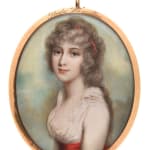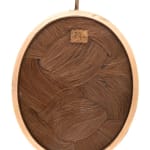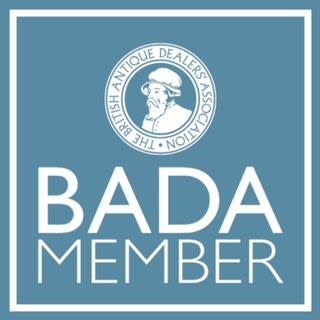Andrew Plimer (1763-1837)
Provenance
William Kissam Vanderbilt II (1878-1944); Parke-Bernet, New York 21-22 May 1948, lot 240;
Sotheby's, 19 November 1984, lot 492 (and illustrated in the Company's Year Book, 1984);
Mellors and Kirk Auctioneers, 28 November 2018
Literature
Emma Hamilton, National Portrait Gallery London, Exhibition, 2002
Daphne Foskett, Miniatures, Dictionary and Guide, 1987
A portrait miniature of Emma, Lady Hamilton, in a white muslin dress with scarlet waist sash and coral beads in her powdered hair, oval watercolour on ivory in a gold frame, glazed back over plaited hair panel. The front of the frame engraved 'Lady Hamilton, Andrew Plimer, Pinxit'.
Emma Hamilton was born Amy Lyon on 26 April 1765, the daughter of a Cheshire blacksmith. Determined to escape her humble origins she began by changing her name to Emma Hart. She was an attractive and ambitious girl who quickly learned to use her talents to her best advantage. In her early teens she escaped to London where she is thought to have worked as an actresses' maid in Drury Lane, the centre of the theatre district. After a short lived relationship with Sir Harry Fetherstonehaugh, resulting in the birth of a daughter which she gave to relatives to care for, she went on to become the mistress of Charles Greville (1749-1809) who took the seventeen year-old Emma (now Emma Hart) to George Romney to sit for her portrait.
Emma captured Romney's imagination to such an extent that he later described her as 'the divine lady ... superior to all womankind' (Letter, 19 June 1791). From their first meetings in 1782, Emma occupied the position of artist's muse. Romney was drawn to her ideal beauty, which combined the regular features of ancient Greek sculpture with the luxuriant chestnut hair of one of Rubens' voluptuous women. Emma also had an intense physical presence and the ability to hold poses and expressions like a professional model. Moreover she was vivacious, loving and innately able to please and flatter the men she became involved with either personally or professionally. Over the next nine years, he nurtured Emma's talent and capitalised on her beauty. In the four years between April 1782 and March 1786 alone, Emma sat to Romney well over a hundred times.
Charles Greville introduced Emma to his uncle, the recently widowed Sir William Hamilton, the British envoy at Naples and deciding he needed to make a financially advantageous marriage, took Emma to Naples to live with him. In 1791 at the age of twenty-six, she married the sixty-one year old Sir William.
Emma first met Horatio Nelson in 1793 when he came to Naples to negotiate the Anglo-Neapolitan Treaty with Sir William. In 1798, he then returned to Naples, battle weary after the defeat of the French at Aboukir Bay and Emma nursed him back to health. Emma nurtured and worshipped Nelson who was, at the same time, treated as a son and friend by Sir William. For over a year, Nelson lived in a ménage-à-trois with the Hamiltons while his ships were moored in the bay of Naples ready to take any necessary action.
Nelson appreciated Emma's discretion (he was still married) and depended upon her love. For the short remainder of his life (and following Sir William's death in 1803) Emma and Nelson lived together as husband and wife in a house in Merton with their daughter Horatia, born in 1801. In his will, Nelson entrusted Emma's care to the nation but this was sadly ignored by George III and his government. Left unsupported, she fled to Calais, where she died in poverty in 1815.
Andrew Plimer (1763-1837) was an English painter of portrait miniatures. He was born in Wellington, Shropshire in 1763, the son of a clock maker, Nathaniel and his wife Mary Elizabeth. He and his older brother Nathaniel trained as clock makers but ran away from home together, travelling for two years in Wales and the west of England with a group of gypsies. In 1781 they settled in London where Andrew began working in the household of Richard Cosway, one of the foremost miniature artists of the 18th century, who later trained him as a portrait artist. According to tradition, Cosway discovered Andrew copying one of his miniatures and was so impressed with the result that he at once realised the young man's artistic ability.
In 1785 Plimer set up his ownpractice in Great Madox Street, in Hanover Square, moving on to Golden Square which was very fashionable, less than a year later. Plimer went on to exhibit at the Royal Academy from 1768 to 1830 and awas possibly the artist who exhibited at the British Institution in 1819. His brother Nathaniel also became a pupil of Cosway and a painter of portrait miniatures.





